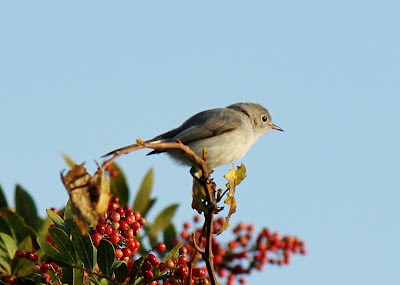Today's featured feathered friend is the Double-Crested Cormorant. Of the 30 Cormorant species worldwide, six can be found in North America. Of these, the Double-Crested Cormorant is by far the most abundant and widespread. This large heavy-bodied bird can be found all across North America. There are five subspecies of the Double-Crested Cormorant. Sizes can vary within the subspecies but generally they are 27 to 35 inches in length, weighing between 2.5 to 5.5 pounds, with a wingspan of up to 48 inches. Cormorants in Alaska are the largest, those in Florida are the smallest.
The Double-Crested Cormorant has a stocky body, long neck, medium-sized tail, webbed feet and a medium-sized hooked bill. They are black with yellow or orange facial skin. Adult males and females are similar in appearance. Juveniles are dark gray or brown, with a pale upper breast and dark belly. In breeding plumage a "double-crest" is visible on the crown, hence their common name. These crests are white in Cormorants from Alaska, and black in other regions.
The diet of the Double-Crested Cormorant is almost exclusively fish. It dives under water to find it's prey and can stay submerged for over a minute. After diving, it stands with outstretched wings, allowing them to dry. They have less preen oil than other birds, so their feathers can get soaked rather than shedding water like a duck's. Enjoy these photos of the Double-Crested Cormorant.....tweet.....tweet!!
The diet of the Double-Crested Cormorant is almost exclusively fish. It dives under water to find it's prey and can stay submerged for over a minute. After diving, it stands with outstretched wings, allowing them to dry. They have less preen oil than other birds, so their feathers can get soaked rather than shedding water like a duck's. Enjoy these photos of the Double-Crested Cormorant.....tweet.....tweet!!
 |
| Double-Crested Cormorant drying it's wings. (Taken 2/2/12, Venice FL) |
http://www.allaboutbirds.org/guide/Double-crested_Cormorant/id
 |
| Double-Crested Cormorants fishing. (Taken 2/2/12, Venice FL) |








.JPG)
.JPG)






.JPG)






.JPG)






.JPG)


.JPG)
.JPG)